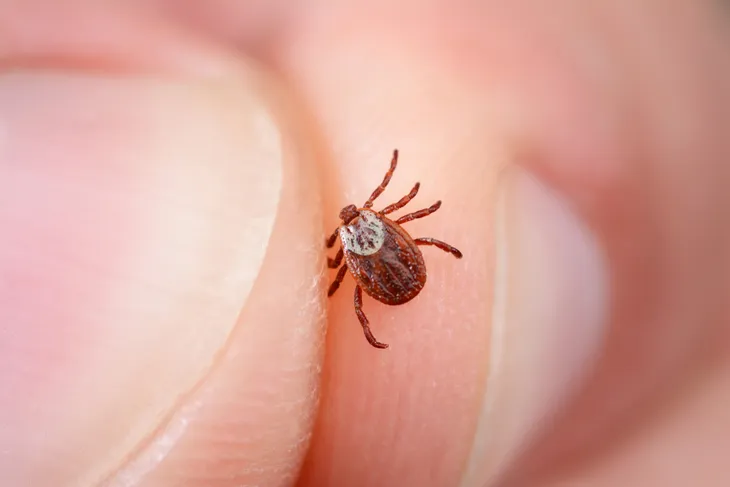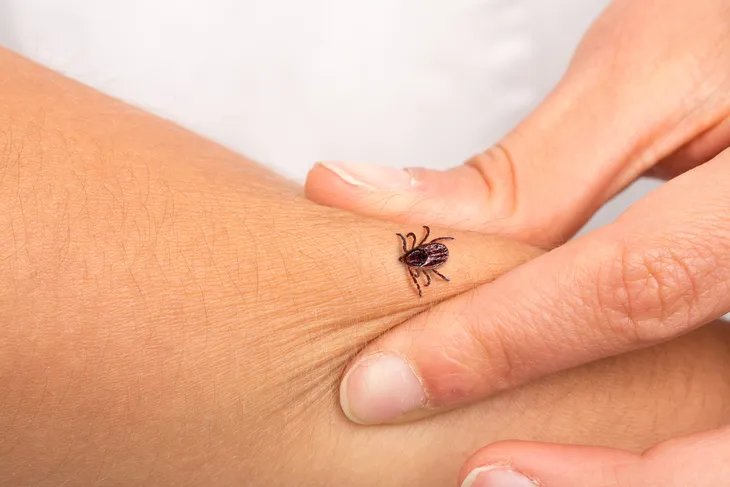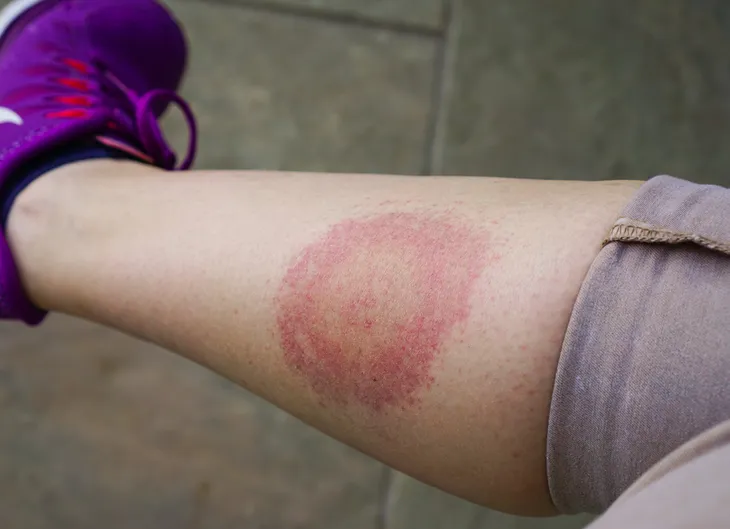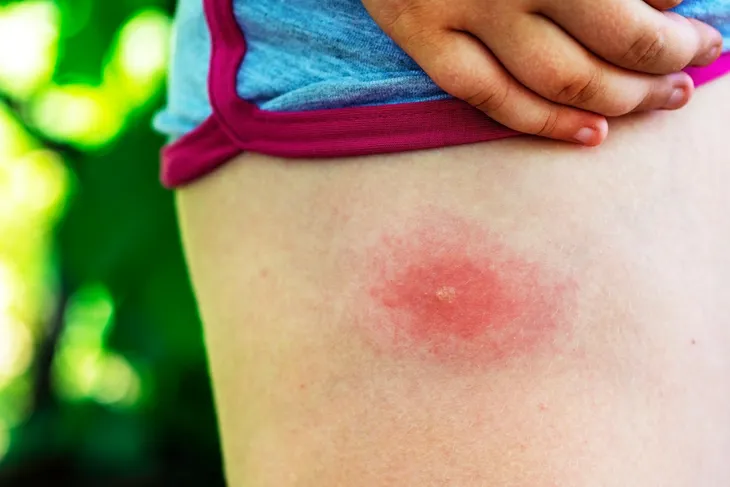There are many great things about the summer, including having outdoor adventures on hiking trails or even in your own backyard. But while there are many positives, there are a couple of negatives you can count on – such as possible sunburns or insect bites.
While many bug bites are nothing more than irritants that can be soothed with the right products, there are other bites that should be taken more seriously – namely from ticks (which are actually tiny arachnids). These relatively small pests can spread Lyme disease and other infections, which can lead to long-term health effects. The number of cases has also been on a sharp rise, so let’s take a closer look at what to look out for.
Identifying a Tick Bite
When it comes to the bites from these blood-sucking ticks, they may be some obvious clues: one of the big ones is that the tick may still be lodged in the skin (for up to 10-days or so), and must be removed properly using fine-nosed tweezers to avoid leaving parts of the mouth behind.
If the tick is not present anymore, then it can be a bit of guesswork in the early stages. The Mayo Clinic notes the initial signs include a small, red bump similar to what you’d expect from a mosquito bite. If the tick wasn’t carrying disease, then the bite will likely disappear on its own, it adds.
Initial Symptoms
Healthline explains that in the majority of cases, a tick bite is pretty harmless and will not produce any side effects. However, some people are apparently allergic to the bites from these small eight-legged creatures, which can result in the typical pain and swelling at the bite site.
In some cases of an allergic reaction, you may experience more severe symptoms such as blistering and even trouble breathing, adds the source. You may also develop a rash. Other severe symptoms from disease typically don’t show up for days or weeks, it adds. (For more information check out: Steps To Take If You Find a Tick On Your Body).
Warnings of Lyme Disease
EveryDay Health explains that if you find an “itchy lesion” that doesn’t go away on its own after a few days, you may be dealing with something a bit more serious than a simple bug bite.
The tell-tale sign of Lyme disease is a “bulls-eye” shaped lesion (up to 12-inches wide) that has one or more rings around it, adds the source. However, while this is one of the more obvious signs you should seek medical attention, not all people carrying Lyme disease will exhibit this type of rash referred to in the medical community as “erythema migrans.”
Other Associated Symptoms
There are other telltale signs of Lyme disease other than the bulls-eye rash. For example, the Mayo Clinic says if you’re infected you may also deal with a fever, body aches, neck stiffness, and even swollen lymph nodes. Other “less common” signs include an irregular heartbeat, inflammation of the liver or eyes, or feeling severe fatigue, it adds.
Antibiotics can be effective at treating Lyme in the earlier stages. But if you ignore the signs, others might start to appear, it warns. These include the rash spreading to other parts of the body, as well as “severe joint pain” and neurological problems, which leads to our next point.
Lyme Disease Often Mistaken For Other Issues
According to the Bay Area Lyme Foundation, about 70-percent of people will develop the erythema migrans rash, which is lower in some other regions. What makes it more challenging in this case is that Lyme disease can mimic other common health problems, it adds.
For example, the source explains that in many cases without a rash, patients have been told that they are suffering from arthritis, fibromyalgia, lupus, or even multiple sclerosis. It’s important to remember when and where a tick might have bitten you if you suspect you have been infected, and relay that info along with your symptoms to a doctor, it adds.
Post-Treatment Lyme Disease Symptoms
Even after being treated with antibiotics, some people continue to exhibit symptoms of Lyme disease for 6-months or longer, according to Healthline. The source says up to 20-percent of treated patients will have chronic symptoms such as fatigue or muscle and joint pain.
Some other symptoms of post-treatment syndrome include trouble sleeping, memory or concentration problems, as well as trouble speaking. It notes that doctors aren’t quite sure why some people have persistent signs after treatment, but theories suggest damage to the nervous system or continued immune response after the infection is gone.
Other Disease Symptoms From Tick Bites
Although Lyme disease is likely the most talked about health complication from a tick bite, it’s not the only one. The CDC has a long list of diseases that can be the result of pathogens carried by certain species of ticks. One of them is Rocky Mountain spotted fever (RMSF), which can cause a sudden high fever and abdominal pain. It can also be deadly without treatment, it notes.
The source also mentions anaplasmosis that can cause fever and chills. Then there’s the Powassan virus that’s marked by fever, vomiting, and loss of coordination and confusion in more severe cases. (It can also be fatal in severe cases). Tularemia is another condition from tick bites that “ranges from mild to life-threatening,” and is accompanied by fever and skin ulcers, it explains.
Avoiding Tick Bites
The risk of getting infected tick bites will vary depending where you are in the U.S., but the first line of defense is always prevention. That means you might want to consider clothing that covers your arms and legs – tuck your pants into your socks so there’s less chance of a tick crawling onto bare skin.
Try not to venture off the beaten path when hiking, as ticks like to hang out in bushes and shrubs, explains MedlinePlus magazine (NIH). Always check yourself and your kids for ticks when you return home, and remember not to panic: it takes 36-hours or so for an infected tick to transmit Lyme disease, it explains. Chemical repellents such as DEET can also be a useful tool in your arsenal.











